Of the 13 winners of the Tremplin Award 2023, awarded to final-year design and applied arts projects, WBDM has chosen to support the textile designer Sarah Carestia, 24, a recent graduate of ENSAV La Cambre in Brussels. Called Entre Voir, her research into the use of textiles in space is a natural extension of contemporary thinking on design today.
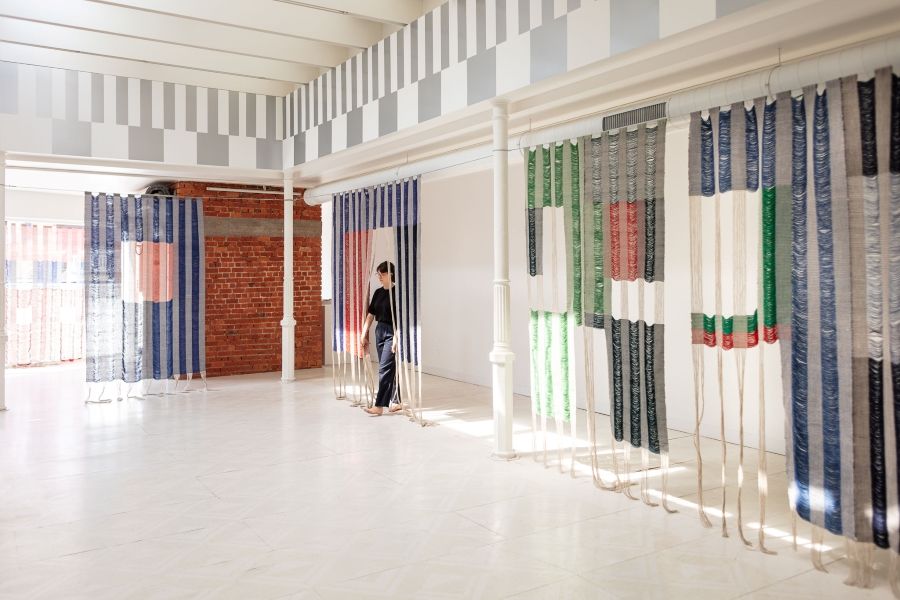
Entre Voir, the project that won you this award, combines conceptual thinking with traditional weaving techniques. Is the complementary nature of these two approaches the essence of your approach?
I realised how important it was for me to move closer to this ancient technique. Not just because it allows me to carry on a rare ancestral skill, but also because my research has enabled me to transpose weaving into a contemporary environment by giving it new functionalities. When I discovered this technique, I felt the urge to buy my own loom. I really enjoy weaving. What’s more, my thinking is intimately linked to my practice.
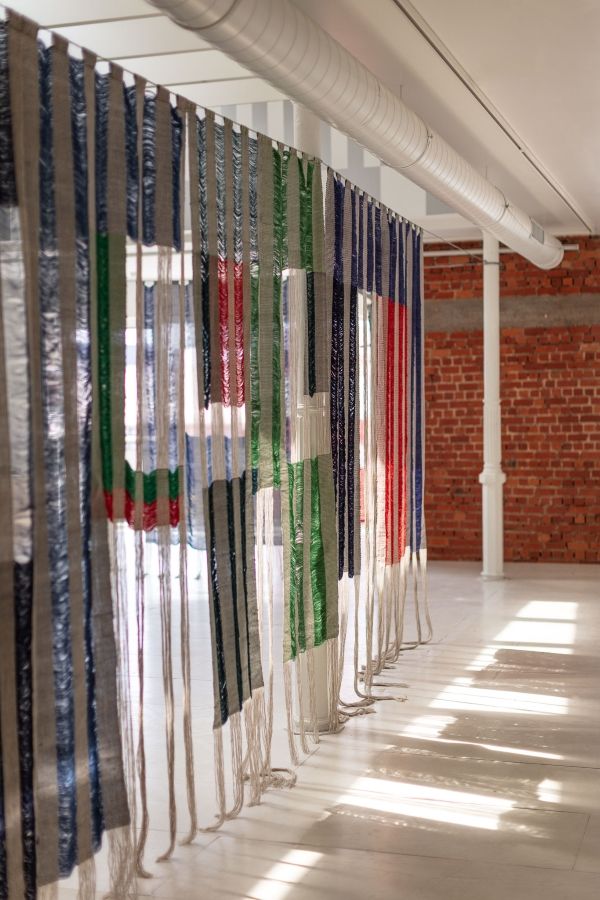
What drew you to textile design rather than any other medium?
Although I have always been attracted to manual work, there was nothing to indicate that I would enrol at La Cambre, even less so in textile design. I was fascinated by every subject from the start: dyeing, pleating, stitching, screen-printing, and then came my encounter with the world of weaving. Finding myself in front of a wooden loom allowed me to discover the very meditative nature of this technique, and also to realise that I could adapt and personalise the machine to suit my different projects. I do all my work by hand. This empirical approach to design requires a great deal of patience, but the process itself is also thought-provoking.

In your work, you play with the notions of full and empty, a highly philosophical concept that also invites us to question the relevance of the object.
Initially, I made body-scale pieces. Then, over time, I began to work on larger projects, questioning the notion of space. Beyond the object as such, I like to play on the philosophical character that comes from a porous fabric. This medium allows me to direct the gaze of those on either side of the fabric.
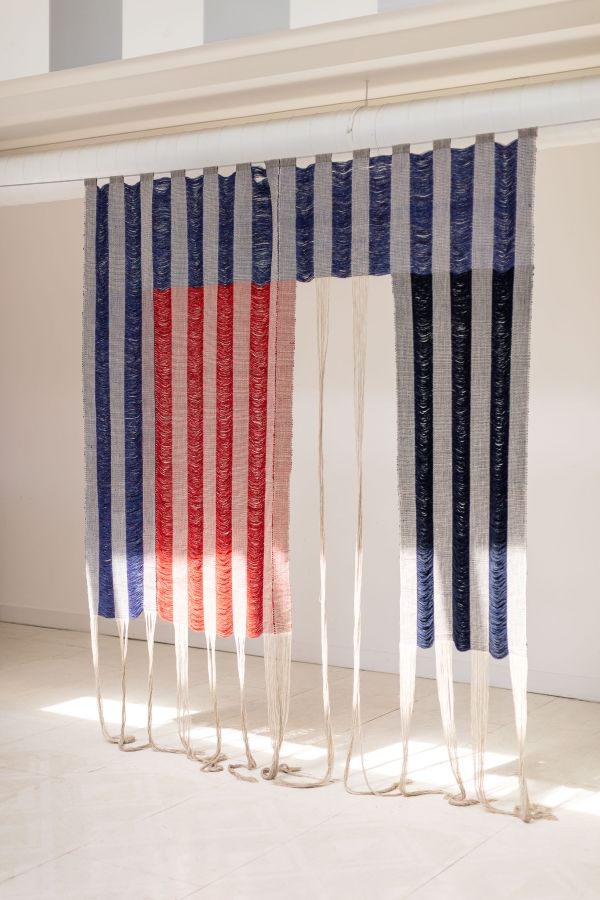
Beyond this contemplative – and ultimately very artistic – aspect, you have given thought to the layout of living spaces. This is a topical subject at a time when we are increasingly seeking to regain intimacy lost due to the overcrowding that can occur in certain offices, the cramped nature of our living spaces, and also our world, which is saturated with intrusive images.
I intend to move towards a more pragmatic approach as my thinking and practice evolve. Although I like to play on the blurred boundary between art and functional design, and don’t necessarily want to draw too sharp a dividing line between the two, I am very interested in the practical applications of my weaving. Rather than building fixed walls in a space, I find it interesting to allow people to extract themselves from a place without necessarily leaving it. Isolation is a subjective notion that has different meanings for different people and individuals. The porosity of my woven surfaces offers this possibility.
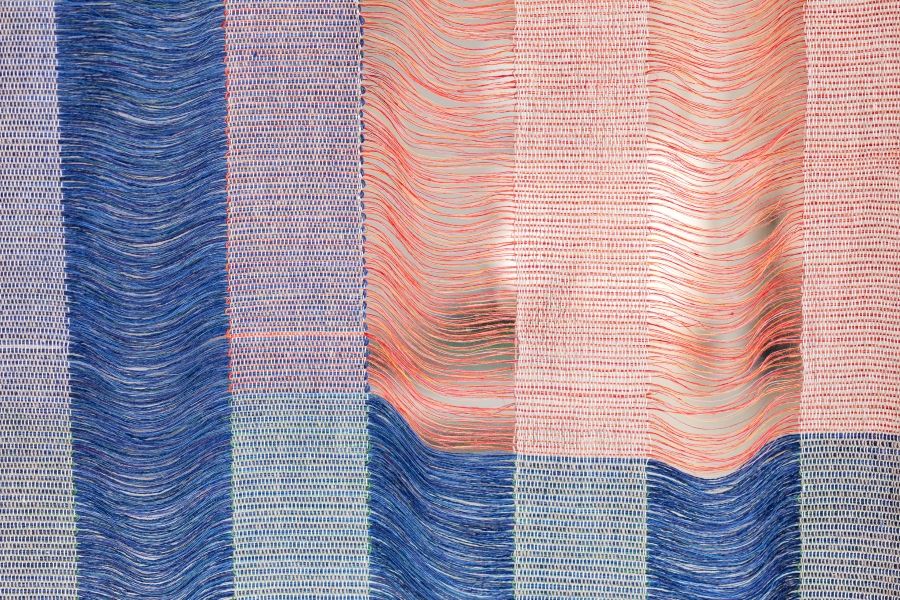
In a way, you are weaving intimacy.
These solutions are modular and easy to install since all you need is a curtain track to create a separation. This notion of intimacy is further accentuated by my use of colour, which plays a fundamental role in my research. The emotions that certain colours arouse in me during the weaving process, and what they imply for the space itself, are an integral part of my approach. For example, when I spent several days weaving a large red piece, I noticed the somewhat negative influence this colour had on me. Generally speaking, I work with primary colours, especially blue, which I have made more complex by adding shades of red, green and orange. I love the contrasts and questions that colours bring me.
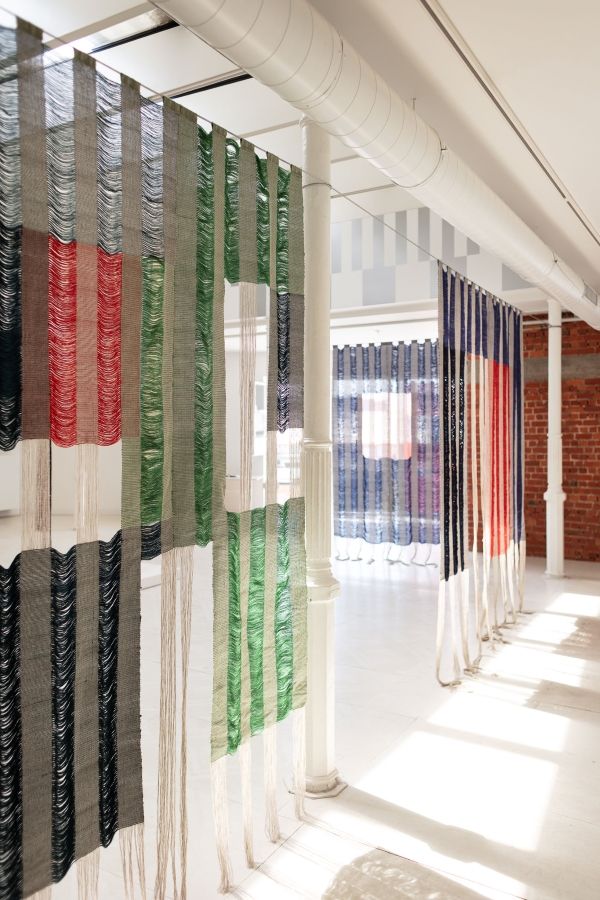
What do this award and the WBDM spotlight mean to you?
It’s encouragement, as well as an incentive to go further. I want to create new pieces. The approach will be the same, but I want to try out other combinations of materials and colours. In the future, I would like to work with architects as well as stage designers. I am very interested in the world of theatre.
